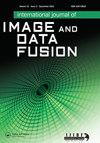Chinese address standardisation of POIs based on GRU and spatial correlation and applied in multi-source emergency events fusion
IF 1.8
Q3 REMOTE SENSING
International Journal of Image and Data Fusion
Pub Date : 2021-08-10
DOI:10.1080/19479832.2021.1961314
引用次数: 3
Abstract
ABSTRACT A large number of users’ microblogs and various Points of Interest (POIs) of public service facilities in social media provide abundant data resources for the emergency events detection, fusion analysis and post-incident rescue. With the correlation analysis of these complex data resources based on the address information or location, people can instantly understand, rescue and make decisions for emergency events. This paper aims to propose an unsupervised method of multi-source POIs addresses segmentation and standardisation based on the Gated Recurrent Unit (GRU) neural network and spatial correlation. First, we use GRU neural network to automatically segment Chinese POIs addresses. Then, according to the spatial correlation between address elements, we can remove incorrect address elements, and construct a hierarchy address element map with the semantic relationship. Finally, the addresses of POIs or emergency events will be standardised by fuzzy matching, which uses the multi-source emergency events fusion of the first step. The propsed method is verified to a relatively high accuracy rate of address segment and standardisation, and it can be applied for the emergency event fusion and spatio-temporal analysis from multi-social media sites.基于GRU和空间相关的poi中文地址标准化及其在多源突发事件融合中的应用
社交媒体中大量用户的微博和各种公共服务设施的兴趣点(poi)为突发事件的检测、融合分析和事后救援提供了丰富的数据资源。通过对这些基于地址信息或位置的复杂数据资源进行关联分析,人们可以即时了解、救援和决策突发事件。本文旨在提出一种基于门控循环单元(GRU)神经网络和空间相关的多源poi地址分割和标准化的无监督方法。首先,我们使用GRU神经网络自动分割中文poi地址。然后,根据地址元素之间的空间相关性,去除不正确的地址元素,构建具有语义关系的层次地址元素映射。最后,利用第一步的多源应急事件融合,通过模糊匹配对事件点或应急事件的地址进行标准化处理。实验结果表明,该方法具有较高的地址段准确率和标准化程度,可应用于多社交媒体站点的突发事件融合和时空分析。
本文章由计算机程序翻译,如有差异,请以英文原文为准。
求助全文
约1分钟内获得全文
求助全文
来源期刊

International Journal of Image and Data Fusion
REMOTE SENSING-
CiteScore
5.00
自引率
0.00%
发文量
10
期刊介绍:
International Journal of Image and Data Fusion provides a single source of information for all aspects of image and data fusion methodologies, developments, techniques and applications. Image and data fusion techniques are important for combining the many sources of satellite, airborne and ground based imaging systems, and integrating these with other related data sets for enhanced information extraction and decision making. Image and data fusion aims at the integration of multi-sensor, multi-temporal, multi-resolution and multi-platform image data, together with geospatial data, GIS, in-situ, and other statistical data sets for improved information extraction, as well as to increase the reliability of the information. This leads to more accurate information that provides for robust operational performance, i.e. increased confidence, reduced ambiguity and improved classification enabling evidence based management. The journal welcomes original research papers, review papers, shorter letters, technical articles, book reviews and conference reports in all areas of image and data fusion including, but not limited to, the following aspects and topics: • Automatic registration/geometric aspects of fusing images with different spatial, spectral, temporal resolutions; phase information; or acquired in different modes • Pixel, feature and decision level fusion algorithms and methodologies • Data Assimilation: fusing data with models • Multi-source classification and information extraction • Integration of satellite, airborne and terrestrial sensor systems • Fusing temporal data sets for change detection studies (e.g. for Land Cover/Land Use Change studies) • Image and data mining from multi-platform, multi-source, multi-scale, multi-temporal data sets (e.g. geometric information, topological information, statistical information, etc.).
 求助内容:
求助内容: 应助结果提醒方式:
应助结果提醒方式:


